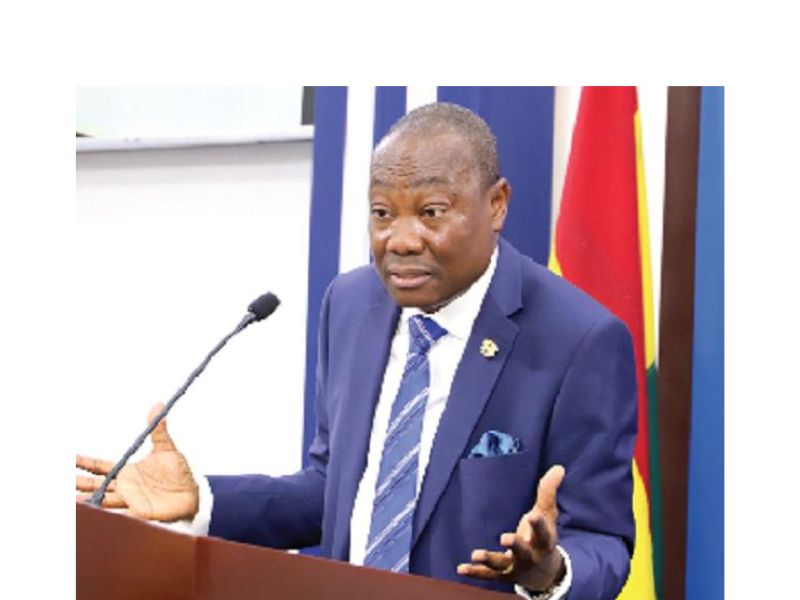The Minerals Commission (MINCOM) is very optimistic that should all stakeholders in the mining sector, especially gold, execute their functions to the letter the terror of illegal mining could end.
The mining regulating institution has made these rather conclusive remarks having observed what could be described as the lackadaisical attitude of other agencies in the value chain.
Last Thursday and Friday, the Commission engaged the media on minerals and mining legislation, during which it was observed that contrary to public perception of the poor performance of the institution, it was rather playing its role.
The journalists (both local and international) were educated on the activities by officials from the Ministry of Lands and Natural Resources, the Minerals Commission, and the National Alternative Employment and Livelihood Programme (NAELP).
During the interaction, the participants sought to understand how the Minerals Commission had decentralised its operations against claims by chiefs and traditional leaders that the government did not involve them in its operations.
The government has been accused of giving out licences to miners without the knowledge of the local authorities. In response, a facilitator from the Minerals Commission, Eric Bukari, debunked the claim and indicated that their district officers send copies of all approved mining licences and accompanying gazettes to the chiefs, the landowners, and other concerned offices.
Another issue which came up was the monitoring system of the Minerals Commission about which the participants were educated that its officials in the various districts filed regular reports to the regional and to headquarters.
These reports are copied to the District Security Coordinating Council, meaning not only the Minerals Commission would be aware of illegal activity in the area, but the assembly itself.
The Commission has also observed that some miners, under the guise of a licence for a particular mining activity, turn to engage in another. Meanwhile, licences are site and mine specific.
Curious about why nothing seemed to be happening to curb the menace, the participants were informed of the numerous reports filed with the Police Service on illegal mining activities, for which no action had been taken.
“We work in accordance with the laws. So, we at the Minerals Commission are doing our part. We believe that if all stakeholders also do their part, we can end illegal mining activities,” Mr. Bukari said.
WORKSHOP TOPIC
The workshop educated the journalists on the small-scale mining aspects of the Minerals and Mining Act, 2006 (703). Sections 81-99 and the Community Scheme; Small-Scale Mining License Acquisition Procedures and License Holder Obligations.
The rest were sanctions for illegal mining under the minerals and mining (Amendment) Act, 2019 (Act 995); an overview of the Minerals and Mining (Minerals Operations-Tracking of Earth Moving and Mining Equipment) Regulations 2020 L.I. 2404; types of minerals rights and characteristics; and lastly, an overview of NAELP.
SANCTIONS FOR ILLEGAL MINING
From the Minerals Commission Legal Department, Mr. Josef Iroko took the participants through the sanctions for mining illegally under the Minerals and Mining Act, 2019 (Act 995), as amended.
It was observed that sanctions under the amended act were stiffer. For instance, the act provides sanctions for providing or being involved in the provision of an excavator for mining operations contrary to law.
One could be fined from 10,000 penalty units up to 15,000 penalty units, or jailed for 15 years minimum and 25 years maximum, an increase from the old law, which pegged the fine at 3,000 penalty units and a maximum jail term of 5 years or both. A penalty unit is GH₡12.
Mr. Iroko highlighted a scenario, which was supported by seasoned broadcaster, Kwaku Sakyi-Addo, that, under the old law, a judge could jail an accused person for a day and the law would have been satisfied.
TRACKING EQUIPMENT
The icing on the cake was a tour of the yet-to-be commissioned control room for tracking of earth-moving and mining equipment, situated in the huge edifice of the Minerals Commission.
The Chief Executive Officer, Mr. Martin K. Ayisi, informed participants about the software, which was locally designed by the University of Mines and Technology (UMaT) at Tarkwa.
He stated that several foreign companies took part in the bidding process, but they could not surpass UMaT.
An official from the tracking department, on the directive of the CEO, showed a test video of how the tracking system would work, and assured them that they have the capacity to track as much earth-moving equipment in a day.
NAELP
Mr. Benedict Addae from the National Alternative Employment and Livelihood Programme (NAELP) gave an overview of the NAELP, whose objectives include providing alternative employment and livelihood programmes to miners impacted by the government’s management of challenges in the illegal mining sector.
They are to also reclaim degraded lands in mining communities to enhance livelihoods. In his presentation, Mr. Addae showed pictures of reclaimed land at Awaso.










